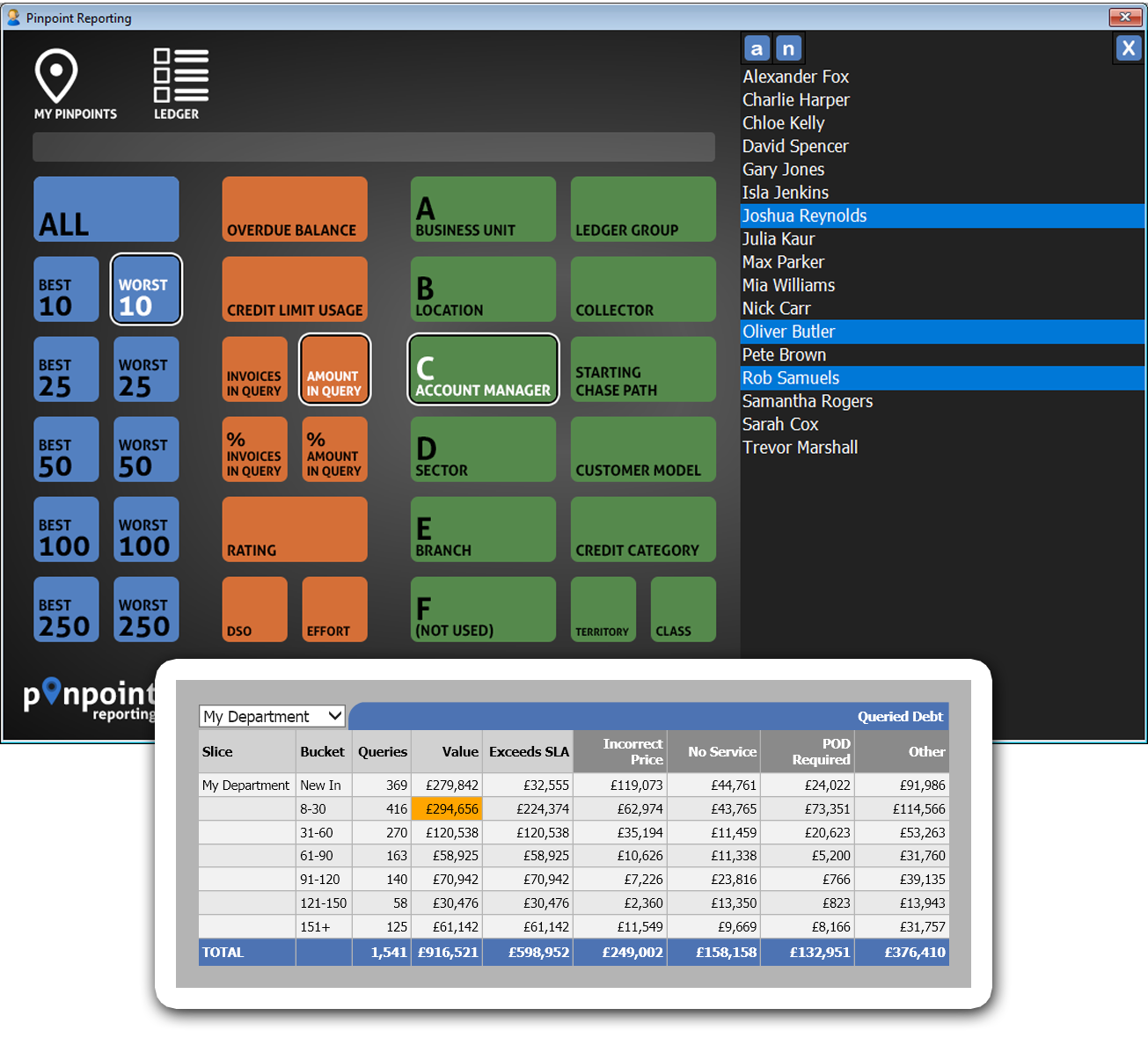Track
problems and solve root cause
We tailor your system to suit the best processes to get your queries resolved, as quickly as possible. Additionally, the majority of the rules can be tailored by you enabling continual improvement in your query management processes.
You can very quickly enjoy the following benefits:
– Unlimited intelligent work-lists
– Easily involve everybody in query resolution
– Complex, powerful, drillable work-lists
– Automatic SLA breach lists
– Top 10 reports, easily see who’s holding up payment and why


Visibility
Flexible and powerful
We tailor your Credica system to suit the best processes to get your queries resolved, as quickly as possible. Additionally, the majority of the rules can be tailored by you enabling continual improvement in your query management processes.
You can very quickly enjoy the following benefits:
– Unlimited intelligent work-lists
– Easily involve everybody in query resolution
– Complex, powerful, drillable work-lists
– Automatic SLA breach lists
– Top 10 reports, easily see who’s holding up payment and why
Framework
of Query and Data Management
P
roblem identification
Organizations should identify the problems they want to solve through query management. It helps in building more targeted solutions that are cost-effective and time-sensitive.
C
reating goals and KPIs
After identifying the problems, companies should focus on defining clear goals to solve these problems. They also need to build business metrics or Key Performance Indicators (KPIs) to track goals’ progress throughout the process.
D
efining Strategy
A clear road map should guide the stakeholders in achieving the defined goals. The road map is the strategy that the stakeholders will follow.
T
arget Operating Model
The TOM defines how an organization will implement the strategy. It helps determine the processes, technologies, people, cultures, etc., necessary to follow the defined strategy.
A
ssigning Responsibilities
Organizations should assign responsibilities to the relevant stakeholders who will carry out the entire data management effort after determining the TOM. Every stakeholder should know what to do and to whom they are accountable. throughout the process.
C
reating glossaries
Collaboration requires that each team understands the work of others. As such, a management framework requires a glossary of technical terms every team member can use as a reference.
Frequently asked questions about
Query Management
A query is a communication tool used in the clinical trial process to clarify or resolve any discrepancies or inconsistencies found in the data. After all, while clinical trials are important in advancing scientific discovery, they are only as valuable as the quality of the data they produce.
The most important characteristic of a query is clarity. The site staff should be easily able to understand what clarification is needed and why. An ideal query should identify what type of issue is at hand, where the potential data error lies, and prompt the user for action with simple instructions.
However, a query should not provide a specific answer to resolve the discrepancy in question. For example, a query could be made for a blood pressure entry of 4000/1000, which is not compatible with life. While the query should flag this inconsistency and provide instructions to verify the data, such as performing a manual re-check and calibrating the blood pressure monitor, it should not direct the staff to change the measure to a specific value, such as 120/80.
- Ensuring compliance with the protocol.
- A completed collection of data.
- Assessing validity and quality of data being collected at each trial site.
- Ensuring patient safety.
- Getting ahead of further errors.
- Ensuring successful regulatory audits.
Queries should ask for specific information so that they can be resolved or answered quickly. However, queries, especially those created through auto-checks, cannot replace the need for site visits and manual checks. The resolution of queries often depends on the site staff, and thus requires that there is clear and frequent communication between the data management team and the trial sites.
In organizational settings, technologies such as data lakes and warehouses use data sources like Enterprise Resource Planning (ERP) systems to deliver relevant information to the concerned teams. However, extracting the correct data from such sources is challenging and may require writing long queries.
Organizations should have a proper repository where developers can store and securely share these queries with other team members. Such a practice would save time and resources and increase the accessibility of data across different domains.
Just like developers use several methods of managing code, organizations should develop similar techniques to manage queries as data becomes the lifeline of the modern enterprise.
Moreover, complex queries often need updates. Such queries often have long documentation history, and new developers find it cumbersome to locate the source to understand the purpose and importance of updates. .
